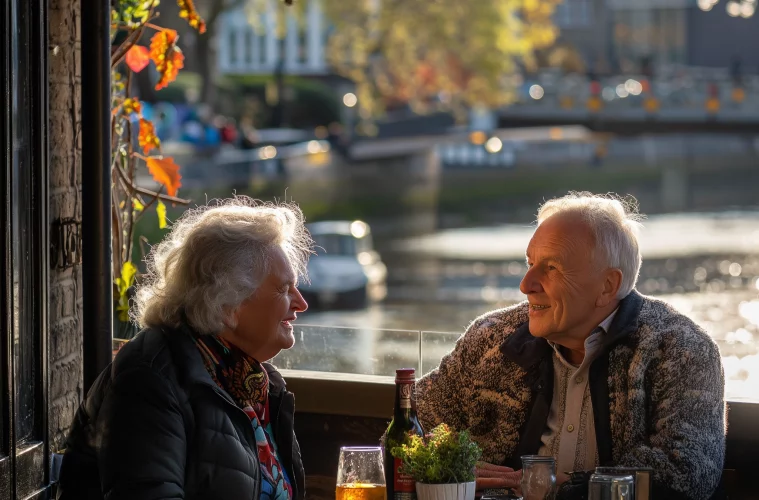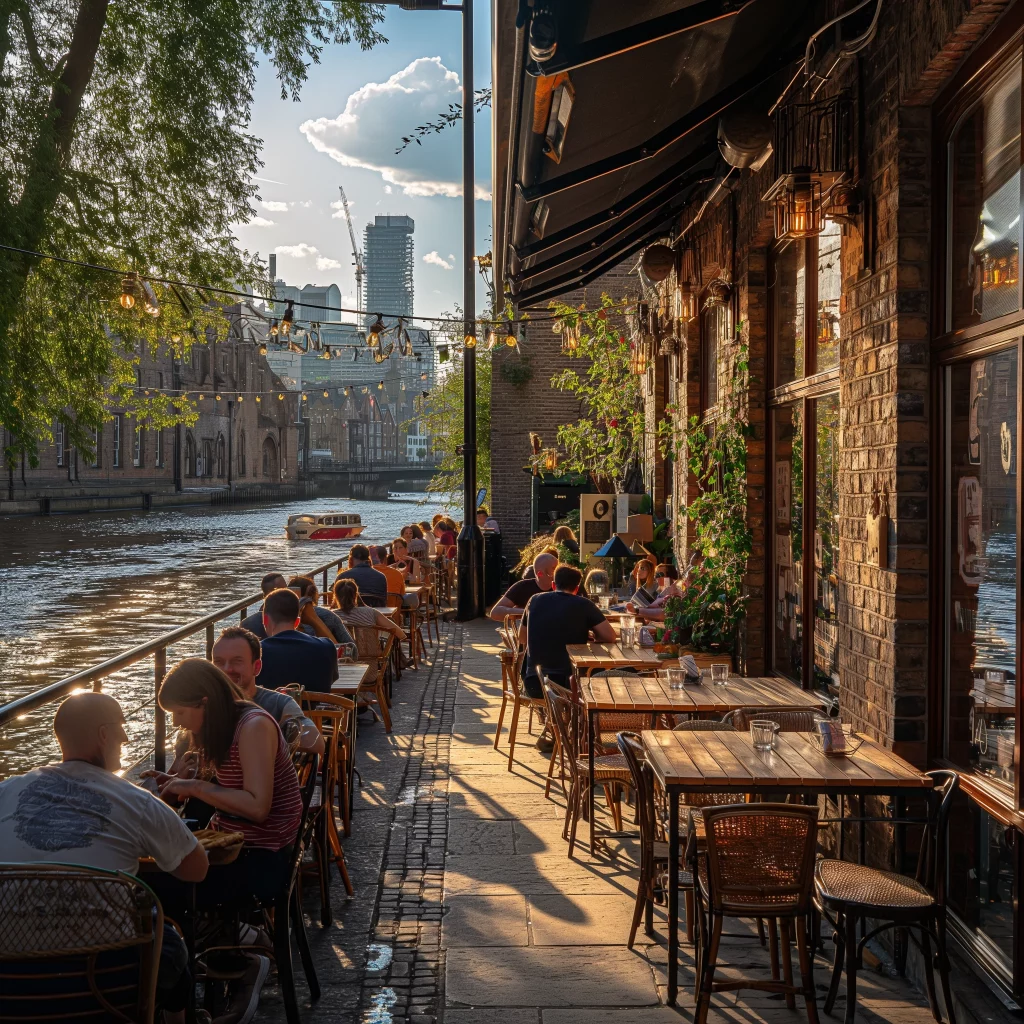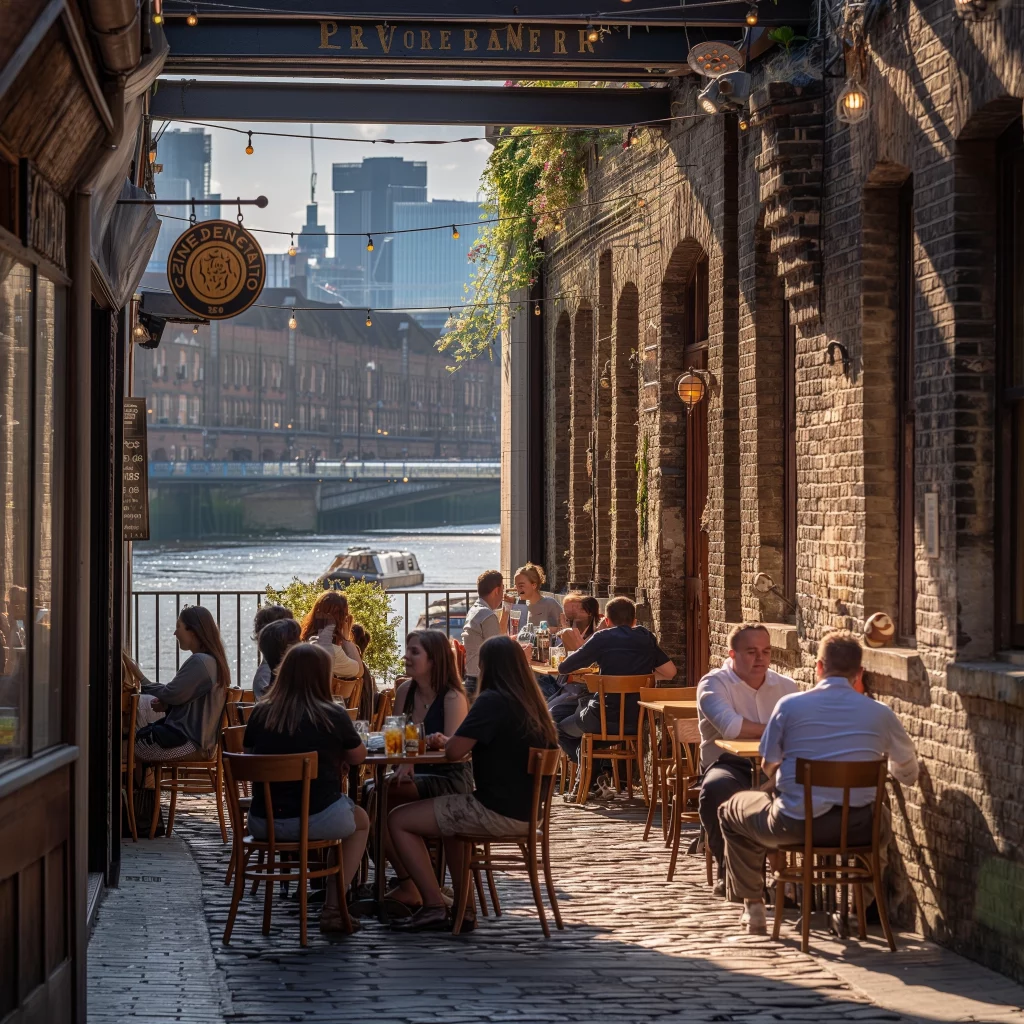The Thames River, a vital artery coursing through the heart of London, has long been the stage upon which much of London’s rich and tumultuous history has played out. From the early days of Roman Londinium to the bustling, global city we know today, the Thames has been at the forefront of commerce, culture, and history. Along this historic river, we find a unique and fascinating aspect of London’s heritage: its timeless taverns. These establishments, some of which have welcomed patrons for centuries, offer more than just a place to enjoy a pint; they serve as gateways to the past, each with its own story.
As we explore these historic pubs along the Thames, we discover a diverse collection of 12 essential selections, each accessible by a leisurely river cruise. This journey is about sampling the local ale and immersing ourselves in London’s rich maritime history and the panoramic pub views that have captivated locals and travellers alike. The emphasis is notably placed on East London—encompassing areas such as Wapping, Limehouse, and Docklands—and stretches west to include Hammersmith, Isleworth, Wandsworth, Rotherhithe, Isle of Dogs, and Greenwich. Each location echoes the cultural legacy of an era when sailors, pirates, artists, and literary figures mingled, creating a vibrant tapestry of social and historical narratives.
The Cultural Mosaic of East London
The cultural legacy of the Thames’ riverside taverns is immense. From the 16th to the 19th centuries, these pubs served as focal points for an eclectic mix of individuals. These pubs were not just mere watering holes but pivotal meeting points where the interplay of industry and creativity flourished.
Sailors returning from distant shores mingled with local artists and literary figures, exchanging tales of the sea with stories of pen and paint. This blend of maritime and cultural heritage is a testament to the dynamic history these establishments have witnessed and contributed to, shaping the character of London’s riverside.
Noteworthy Pubs and Their Rich Histories
Certain names stand out among the constellation of taverns that adorn the banks of the Thames, each with its own illustrious history and unique charm.
- The Prospect of Whitby, dating back to 1520, is London’s oldest riverside pub. Its dark wooden beams and flagstone floors have been tread upon by pirates and princes alike, with historical figures such as Samuel Pepys and Charles Dickens among its noted patrons. The pub’s past is as rich and varied as the clientele it has served, providing a tangible link to London’s maritime history.
- The Mayflower in Rotherhithe stakes its claim as one of the Thames’ most historically significant taverns. It marked the departure point of the Pilgrim Fathers to the New World in 1620, adding a layer of historical depth that transcends its role as a simple public house.
- Survivors of the Great Fire of London, The Anchor and The Anchor Bankside stand as testaments to the city’s resilience. Their foundations are steeped in 17th-century history, with ties to William Shakespeare, offering patrons a glimpse into the Elizabethan era.
- Built in 1837, The Trafalgar Tavern symbolises Britain’s naval glory and political intrigue. Its majestic Victorian architecture and strategic location provide unrivalled views of the Thames, embodying the spirit of the era in which it was constructed.
- Doggett’s Coat and Badge and The Dickens Inn each tell unique stories of London’s social and cultural fabric. With its panoramic terrace views, Doggett’s is intrinsically linked to London’s oldest boat race. At the same time, The Dickens Inn, nestled in the picturesque St Katharine’s Dock, offers a connection to the literary giant Charles Dickens, albeit more through its name and relocation rather than historical fact.
The Maritime and Culinary Journey
The Thames’ taverns offer more than just historical architecture and a pint of beer; they provide a window into the diverse narratives that have shaped London’s history. From tales of smugglers to stories of royal patronage and judicial proceedings, these establishments offer insights into various facets of British maritime history. Their walls echo with tales of naval exploits, the comings and goings of judges and monarchs, and the creative musings of artists and writers who found inspiration within their cosy confines.
Complementing the rich historical tapestry of these taverns is a culinary diversity that ranges from traditional British pub fare to modern British cuisine crafted by celebrated chefs. Establishments like The Narrow by Gordon Ramsay in Limehouse highlight the evolution of British culinary tastes, offering a modern twist on classic dishes. The spectrum of dining experiences along the Thames reflects the blending of time-honoured traditions with contemporary culinary innovation, catering to various palates and preferences.
The ambience of these historic pubs is as varied as their culinary offerings. They range from intimate, ship-like interiors that evoke a sense of being at sea to grand Victorian spaces with expansive windows offering breathtaking views of the Thames. This blend of old-world charm and contemporary refurbishment provides a unique setting where patrons can enjoy the history and culinary delights of London’s riverside taverns.
Panoramic Vistas and Architectural Marvels
One of the most compelling aspects of Thames taverns is their ability to offer unparalleled views of the river and its surroundings. Establishments like The Prospect of Whitby and The Trafalgar Tavern boast significant historical pedigrees and provide patrons with scenic vistas that capture the essence of London’s ever-evolving landscape. The unique architectural charm of these pubs, from Tudor to Victorian styles, enhances the experience, making each visit a visually enriching journey through time.
These panoramic views and distinctive architectures are not merely aesthetic pleasures; they serve as a backdrop for the rich tapestry of stories and events that have unfolded over the centuries. Whether it’s watching the ebb and flow of the Thames from a cosy riverside nook or admiring the sunset from a grand Victorian terrace, the experience of visiting these taverns is imbued with a sense of connection to both the past and the present.
Literary and Historical Significance
The Thames taverns have played host to some of the most iconic figures in British literary and historical narratives. The Anchor Bankside, for instance, is steeped in Shakespearean connections, offering a tangible link to the world of Elizabethan theatre. Likewise, The Dickens Inn, despite its more tenuous connection to Charles Dickens, evokes the spirit of Victorian London, inviting visitors to step into a world that inspired some of Dickens’ most memorable works.
These establishments are not just places of leisure but sites of cultural pilgrimage, where visitors can immerse themselves in the storied pasts that have shaped British literature and history. The ability of these taverns to serve as settings for significant historical and literary events adds a layer of depth to the visitor experience, enriching each pint with stories of royal patronage, artistic inspiration, and the genesis of the national anthem.
The Path Between Tourist Attractions and Local Hideaways
One of the unique challenges and pleasures of exploring Thames taverns is navigating the delicate balance between well-trodden tourist paths and hidden gems favoured by locals. Establishments like The Mayflower and The Prospect of Whitby draw visitors from around the globe, eager to explore their historic premises and soak in their storied atmospheres. Yet, part of the charm of Thames Tavern exploration lies in discovering lesser-known pubs that offer equally compelling histories and experiences without the crowds.
These local haunts, often tucked away in quieter stretches of the riverbank, provide a more intimate glimpse into London’s pub culture. They allow for a deeper connection with the local community and an opportunity to experience the Thames tavern tradition more personally and authentically. Whether stumbling upon a small, family-run pub with centuries-old roots or enjoying a quiet pint in a tavern off the usual tourist track, these experiences add a rich layer of discovery to exploring London’s historic riverside.
Concluding Reflections
As we pause to reflect on our exploration of Thames taverns, it’s clear that these historic establishments offer much more than just a place to enjoy a drink. They are custodians of history, bearers of culture, and bridges to the past. Through their walls, we traverse centuries of London’s maritime legacy, engage with the spirits of literary giants, and immerse ourselves in the architectural beauty that has withstood the test of time.
Our journey along the Thames, from bustling East London docks to serene West London stretches, reveals a microcosm of British history and culture encapsulated within the timeworn walls of its taverns. These establishments, with their diverse backdrops, culinary delights, and unique ambiences, invite us to explore, reflect, and celebrate the rich tapestry of London life.
In the stories of pirates and poets, the clash of tankards and the murmur of riverside conversations, we find a living, breathing history that continues to enchant and inspire. The Thames and its timeless taverns stand as a testament to London’s enduring spirit, inviting us to embark on our journey of discovery along its storied banks.



